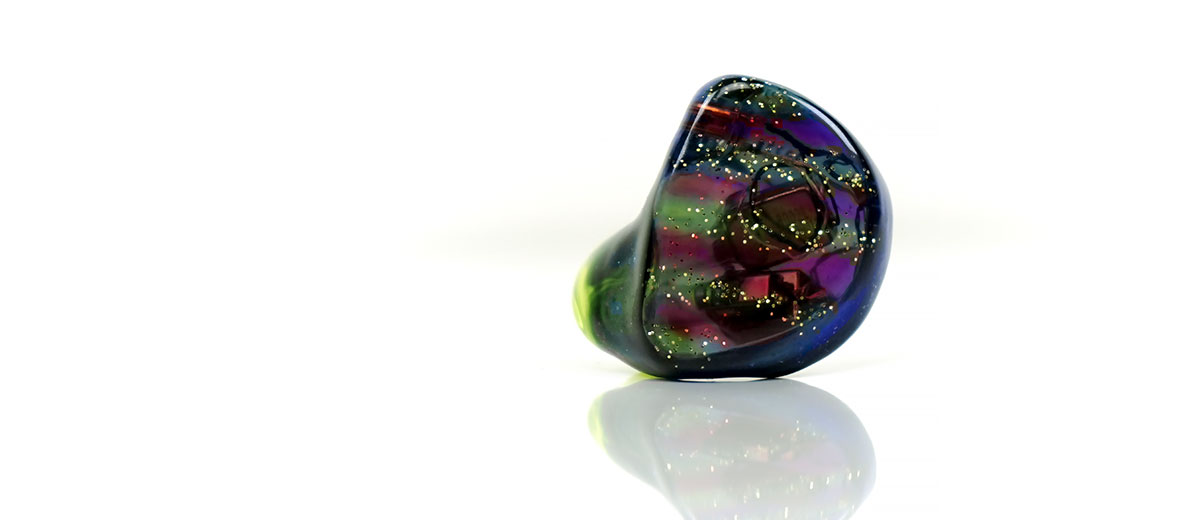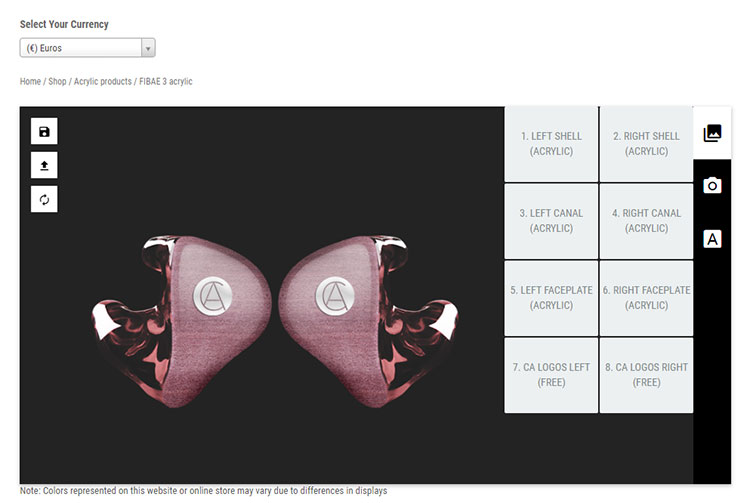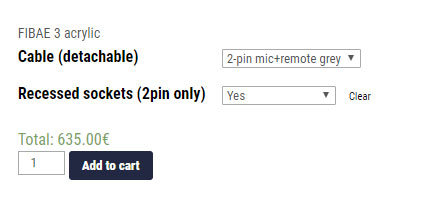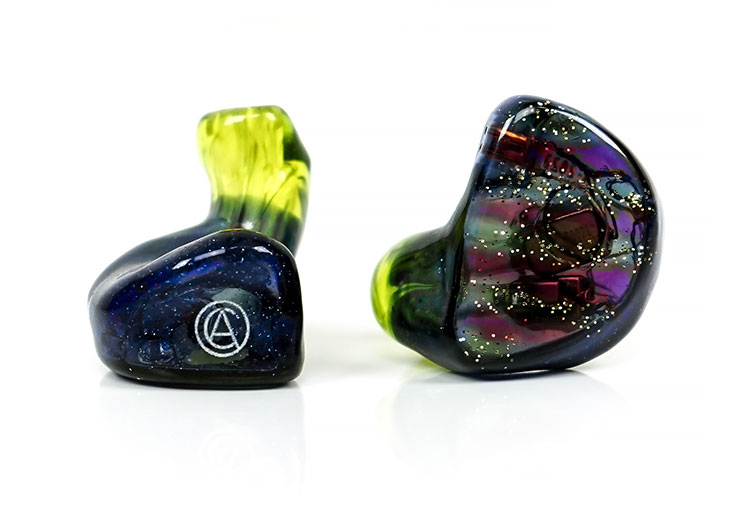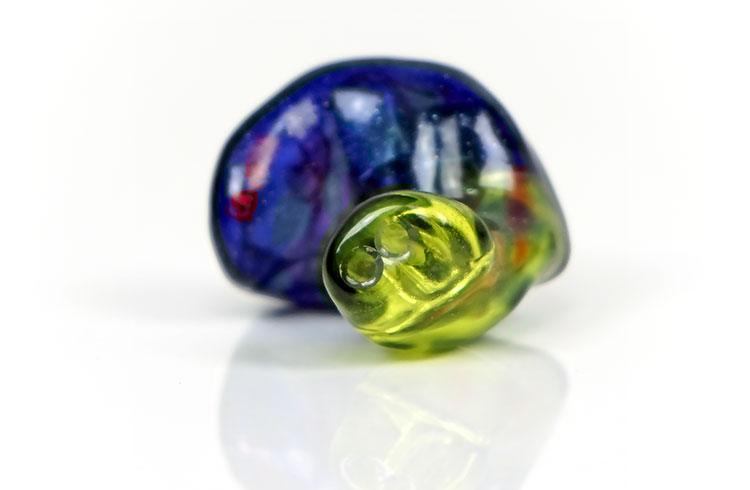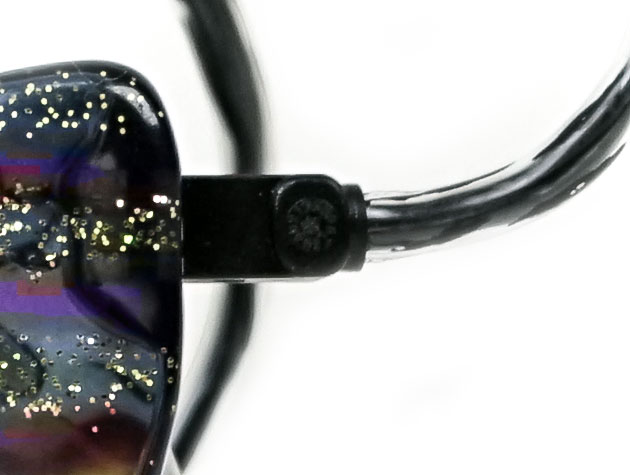The Custom Art FIBAE 3 is the 3rd custom monitor release by Piotr and the team using FIBAE or flat impedance technology. The FIBAE 3 is priced from €525.
Disclaimer: The Custom Art FIBAE 3 sent to us is a sample in exchange for our honest opinion. We thank the team at Custom Art for giving us this opportunity.
To read more about Custom Art products we reviewed on Headfonics click here.
Note, this review follows our new scoring guidelines for 2020 which you can read up on here.
Custom Art’s FIBAE family is growing! In the last 6 months, we have reviewed the FIBAE 1 and FIBAE 2 custom monitors and quite logically the FIBAE 3 is next up.
It only seems like yesterday that I first heard the FIBAE 1 and what it can do with impedance mismatch issues. The FIBAE 2 gave us a musical thicker sounding and a warmer option to the neutral FIBAE 1 a few months later.
Both are excellent and both offer strong positive differences that I think a lot of mid-fi shoppers will find appealing. Now we are onto triple drivers (hence the ‘3’ moniker in the title) and quite possibly one of the coolest designs I have seen land at our office in the last 12 months.
By the way, the price for the FIBAE 3 is still incredibly competitive for a CIEM starting from €525.
What Is The Pitch?
FIBAE Technology
The clue is in the name. FIBAE stands for Flat Impedance Balanced Armature Earphone. This is a patent-pending design Custom Art developed recently and something which I first heard about during CanJam Singapore back in March 2017 when CA was at the prototype stage.
It has advanced rapidly now after one year. So much so that I hope to be testing the ‘FIBAE ME’ at CanJam Singapore 2018 and we have already done reviews of their FIBAE 1 and 2.
Flat Impedance
In summary, FIBAE promises to deliver flat impedance and phase via a series of specially designed balanced armatures to negate the problem of output impedance dependency.
Why is that important? Basically, every headphone jack has an output impedance rating that affects the tonality of your IEM to some degree. Manufacturers have taken strides to reduce this as a factor in their DAPs and amps with a sub-1-ohm impedance being almost the norm.
Inductive To Resistive
However, this is not always the case. Some can range well over 1-ohm such as the Shanling M2s at nearly 5-ohms, the HiBy Music R6 at 10-ohms and many balanced outputs come close to 2-ohms.
The FIBAE pitch changes balanced armature designs from inductive to resistive in order to cancel out impedance mismatching and delivers an optimal sound no matter what jack you plug your IEM into.
The Process
Online Store
The store is a bit similar to the new Vision Ears online store and I also like the stock design options. It may not be quite as complex as the 64 Audio Store but it does have more realistic pictures and more interesting choices. I still think 64 Audio needs to come out of their 3D-cacoon a little and expand their design choices a lot more.
Using the store is really nice and easy with plenty of flexibility. You can customize each individual earpiece (left or right) in terms of shell, nozzle, and faceplate. You can also put your own custom artwork and text onto your creation.
Mind you, I again taxed Piotr to come up with a unique design via online chat and emails which we will talk about a little later. Call it ala carte if you will but it can be duplicated by special request.
Options
Using the CA store process you are offered up to 13 different shell and tip designs. After that, you have a huge choice of up to 39 different plate designs. These range from translucent acrylic colors, to exotic woods such as amaranth as well as more modernistic tones such as carbon fiber and aluminum.
Note, for the FIBAE 3 you can opt for either silicone or acrylic much like the FIBAE 2. The FIBAE 1 is still an acrylic only option.
Pricing
The starting price of FIBAE 3 is €525. This is the same for both silicone and acrylic versions. Of course, these are custom designs so you have a little interaction with the pricing as you go along and pick out your custom design. Just remember the more you add the more you pay.
I calculated that each option cost roughly around 13 EUR and only the basic clear shell will keep it pegged at €525. With colored shells and wooden plates and the free logo expect around €575. This particular design will cost you that also at 25 EUR per side. To be honest I find the FIBAE 3 pricing to be more than reasonable, even for the premium plates. I have seen some other stores add 100’s of dollars to the price for similar plates and designs so kudos to Custom Art for keeping prices reasonably affordable.
Add-Ons
Other options to the right of the screen include cable type and socket type. Recessed will cost you an additional 10 EUR or you can opt for the free non-recessed connector option. For the silicone version, you cannot change the socket version to recessed.
Cable choices are 2-pin in grey or black free of charge or an optional grey cable with inline remote and mic for an additional 25 EUR. Both silicone and acrylic are designed to be fully detachable. I estimate the maximum cost of a FIBAE 3 with all the premium options and the most expensive add-ons to be around 635 EUR. That is not too bad at all.
Accessories & Packaging
All Custom Art accessories are the same with each product. It is nothing hugely fancy but it is professional neat and tidy. You get some control over the cable choice during check out but otherwise, you will receive a black elongated carton box with the following additional items:
- Peli 1010 case
- Zipper case
- Wax pick tool
- Drying pellet
- Warranty card
The final piece of the jigsaw is a small manual on safe listening personalized with your serial number and date of manufacture and the word “Hi” on the front.
The only pity is the lack of Custom Art branding on the large black shipping box and the Peli 1010 and pill case is still not here in 2018. That is a missed opportunity for brand reinforcement. Though I do have to caution that at this price point, for the FIBAE 1, 2 and 3 the margins may be too tight to do anything more expansive in terms of packaging.
Ear Impressions Short Guide
The impressions guide and Q&A from Custom Art is absolutely brilliant. Perhaps one of the best in the business in recent memory. It’s not just a simple do this and that but addresses all your concerns in a few simple question and answer formats.
To quote, simply because I could not say it any better myself:
Impressions have to be made from soft silicone material. Dreve, Egger and Westone brands are recommended. It is suggested to use foam or cotton swabs to protect eardrum.
Impressions have to be made past the second bend and shall include: full concha, helix, crus helix, tragus and antitragus.
Note that Custom Art does require open jaw impressions so bring a bite block to your usual audiologist to keep your jaw steady whilst open to prevent the clay impressions from poorly curing. Then it is a simple case of packing them securely and sending them to Custom Art through your favored courier.
Meet The FIBAE 3
Design
Utterly fantastic would be the short answer. This is a busy design for sure but it is a concept I cannot stop staring at. It is up there with the lava candy design of the Harmony 8.2 Piotr sent to me a few years ago. It also proves that 3D printing, whilst accurate, is limiting in being able to “think” outside of the box. This is handmade, totally original and unlike anything I have seen before.
Piotr and I discussed it and during that discussion, I called it the Avatar design. Not just because of the collage of greens and purples that strongly reminded me of the Pandoran homeworld jungle. That’s the easy bit. Rather the depth of the color mixes looked almost 3D to me. This is a design by request but if you want it simply email Custom Art and I am sure they would be only too happy to make one for you.
Shell
The shell color mix is a dark green and amaranth purple transparent shell with a layer of glitter. The nozzle is finished with a translucent venom green. There is no additional faceplate rather the top is streaked with a Venom Green and Purple Transparent stripes and glitter. An official Custom Art logo is discretely placed on the side rather than the front so as not to disrupt the flow of the design.
Much like the FIBAE 1 and 2 we reviewed, the FIBAE 3 is constructed with a hollow body acrylic shell. You can, of course, get a silicone version but I am unsure if this design is workable beyond acrylic. Suffice to say, much like the previous FIBAE units, the finish is excellent. The shells are clean, bubble-free and the lacquer coating is very smooth.
Finish
Internals
The FIBAE 3 feels lighter than the FIBAE 2 but heavier than the FIBAE 1. Peering into the shell the driver configuration on the FIBAE 3 would seem to indicate three smaller drivers compared to the FIBAE 2’s one large and one small driver. Perhaps that larger driver on the FIBAE 2 accounts for the additional weight.
There is far less transparency in this design than FIBAE 1 or 2 but from what I can see is an alignment of the 3 drivers above the bores and fairly central in the shell. This is actually a dual-bore nozzle design with 2 tubes running up to a 2:1 split between the drivers. One tube is for the mids and highs and the second tube is the custom driver covering the lows.
Custom Art has confirmed that this is a triple BA setup with no larger CI 22955 from the FIBAE 2 covering the low-end. The final custom-designed driver for the low-end in the FIBAE 3 is a bit bigger than the previously used Knowles 33357 but not as big as the CI 22955.
Cables & Connectors
Connector Options
Custom Art offers a small range of connection choices for the FIBAE 3. However, the silicone version is slightly more restrictive in connector choices due to the nature of the materials being used.
You can elect to go with a standard flat socket 0.78mm 2-pin cable but you cannot select MMCX. Nor can you choose a recessed socket in silicone. I presume the pressure applied to a dropped socket design could break the silicone shell a bit quicker than it would on a stiffer acrylic socket.
Type
The cable choice is the same as the FIBAE 1 and 2. This is a Plastics One cable design to get you going out of the box. I don’t have any issues with this cable, particularly at this price point but I know I can get better from the aftermarket cable providers.
The stock cable ticks all the boxes in terms of being light, pliant and just the right length for portable use (1.2m). This is a 4-core OFC copper wire cable and the sound signature suggests it is a bit but it is not overly warm as some other variants.
The cable is terminated with a right angle 3.5m gold-plated stereo jack on one end and finished with the usual 2-pin connectors on the other with left and right markings. The cable does have good memory hook materials. They are a little on the thick side but they retain their shape very well. Note this cable, as in all cables for the FIBAE series, is designed to be worn over the ear.
Comfort & Seal
Perfect fit and perfect execution in terms of pressure balance in the canal and overall comfort. Having said all that the FIBAE 3 does seem to have a slightly narrower nozzle than the FIBAE 1 and more in line with the FIBAE 2.
It is also smaller in volumetric size than the FIBAE 2, especially towards the faceplate. That slightly smaller nozzle combined with a smaller size allows the FIBAE 3 to sit a little deeper in the outer ear. It also presses a little less on the antihelix ridge than the F2 making it marginally more comfortable.
The background isolation is just marginally inferior to the FIBAE 2 and FIBAE 1, perhaps due to the smaller size and more relaxed nozzle fitting but it is still very good indeed. The F3 fitting feels more about total comfort for longer listening sessions rather than an outright seal of the first 2. The first 2 may cause ear fatigue a little quicker as a result.
Short Fitting Comparisons
Unique Melody
The FIBAE 3 is a little closer to the UM creations in terms of comfort. The overall size depends on the unit you get. The Mason V3, for example, is huge compared to the FIBAE 3 whereas the Maestro V2 is more or less the same size.
Critically they have approximately the same length of a nozzle and I have always felt UM to be a relaxed pro-comfort fitting. That puts the FIBAE 3 in the comfort class for me rather than a deep pro-fitting.
64 Audio
64 Audio’s 3D printing is very good and accurate, perhaps one of the best in the business for this process. However, they differ in their fittings from the FIBAE 3 with a longer nozzle and a tighter ‘pro-fit’.
The comfort is very good actually but the intention of 64 Audio designs are always with the stage musician in mind so it goes a bit deeper. That means the seal is also slightly better than the FIBAE 3 and the pressure on the ear canal slightly greater.
Units like the A18 also use wide bore horn-type delivery systems so the nozzle is marginally more bulbous in its finish. Alternative options such as the A6 have smaller nozzles with a more traditional multi-tube design but they still use a much longer nozzle fitting.
Vision Ears
Visions Ears CIEMs are handmade and done to a very high standard. Their background noise attenuation levels are among the best I have ever tried and certainly they edge out the FIBAE 3 with units like the VE8.
To get this level of seal their units are a touch bigger and longer so there is more pressure on the outer ear and ear canal as a result. The depth of the nozzle is marginally shorter than 64 Audio but still longer than the FIBAE 3.
The nozzle difference depends a little on the unit you choose. The VE8 nozzle is a little wider than the FIBAE 3 and a little longer. The VE6 XControl single bore horn delivery system is much wider than the FIBAE 3 but the same length. The VE6 unit felt more of a relaxed-fitting comparable to the FIBAE 3 whereas the VE8 was much deeper.
Click on page 2 below for sound impressions and comparisons




